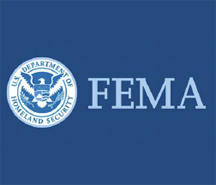
In partnership with the Federal Emergency Management Agency (FEMA), Sandia is designing and deploying a pilot alert and warning system that will provide a means to ensure effective public communications during a federal, state, or local emergency.
Known as the Integrated Public Alert and Warning System (IPAWS), the program, which began piloting on August 1 in the midst of the 2007 hurricane season, is administered by FEMA for the Department of Homeland Security and is initially supporting several states and local jurisdictions in the US Gulf Coast region. IPAWS addresses the mandate and vision of Executive Order 13407 to ensure that the president can rapidly and effectively address and warn the public over a broad range of communications devices and under any conditions.
Transforming emergency alerts
IPAWS is designed to transform national emergency alerts from audio-only messages delivered over radios and televisions into a sophisticated, comprehensive system that can reliably and efficiently send alerts by voice, text, and video to all Americans, including those with disabilities or who cannot understand English. FEMA’s aim is to deliver targeted alerts and warnings over more communications devices to more people, anywhere, and at any time a disaster strikes.
FEMA’s current Emergency Alert System (EAS) has been in place since 1994, replacing the Emergency Broadcast System (EBS) that launched in 1963. The EAS allows the president to transmit a national alert within 10 minutes to citizens, and it allows state and local government officials to send messages during nonfederal emergencies.
The IPAWS system will include an enhanced Web Alert and Relay Network (WARN) that provides emergency operations staff with collaboration tools, public access websites and alert and warning notification facilities. WARN also features an “opt-in” capability that allows citizens to sign up to receive alert messages via pagers, cell phones, email, and other communications devices. The WARN system includes an Emergency Telephone Notification component that provides automated calling of all residents in a selected geographic area, and a Deaf and Hard-of-Hearing Notification System that provides information to the hearing impaired using American Sign Language videos on the Internet and on personal communication devices. Each of the pilot program technologies will be installed and tested through December 2007, while FEMA will seek additional funding for further piloting in 2008.
Develop and deploy
“At Sandia, IPAWS is a clear New Mexico//California collaboration,” says Ron Glaser (6464), who is serving as the Labs’ program manager for IPAWS. Technical teams, led by Ron’s Systems Engineering group, with expertise from 5610, 6320, 6450, 6460, 8110, 8520, 8960, and 9510, are working together to develop and deploy the initial IPAWS capability.
Specifically, says Ron, Sandia is creating the secure architecture, standards, protocols, and methodologies for message security and distribution of alerts and warnings. Sandia is also developing the certification program for companies to qualify for access to the IPAWS communications framework. The architecture and messaging standards developed through this program will be fed back to standards-setting organizations, such as OASIS (Organization for the Advancement of Structured Information Standards).
Pilot activities this summer
The lab will be demonstrating and evaluating IPAWS components during pilot activities this summer. WARN, the first IPAWS component, integrates existing vendor-supplied technologies to provide a warning capability that could be used during this year’s hurricane season. The initial rollout, led by Jeff Jortner (8962), became operational August 1.
“Because Sandia doesn’t have a technology dog in this fight, we’re seen by FEMA as an honest broker,” says Jeff. “We understand the technology that we’re integrating, but at the same time we have no product or service we’re trying to sell. That gives us unique credibility in the eyes of our sponsors.” Sandia has selected several subcontractors to assist in technology deployment for the IPAWS WARN system, including MyStateUSA, NuParadigm Foundation, Warning Systems Inc., and others.
Lab analysts at Sandia are also working with emergency management staff in Alabama, Louisiana, Mississippi, and New Mexico to understand specific message targeting capabilities and needs, and various public alert and warning communication options for multiple communities of interest across federal, state, local, and tribal organizations.
“Our discussions with the New Mexico-based communities of interest, which have included emergency operations managers from Bernalillo County, the city of Albuquerque, and the state of New Mexico, have been particularly valuable,” says Heidi Ammerlahn (8962).
Those jurisdictions have raised several issues that researchers otherwise may not have been aware of, she says. Some local officials, for instance, may not think so much about technology itself but rather about whether individuals without technology training will be able to take advantage of IPAWS features and actually use the system properly.
Sandia enjoys a long history in the design and development of command, communication, and control systems. Its federal customers include the US Northern Command, the Defense Threat Reduction Agency, and the Department of Defense.
Jill Hruby (8100), who directs the Labs’ Center for Homeland Security and Defense Systems, says Sandia’s work on IPAWS may be a harbinger of things to come.
“Though this the first major project on communications architecture and information surety for DHS, it likely won’t be the last,” says Jill. “If we continue to be successful with this project, I think there are other opportunities to use this same architecture for other complex communication systems that require a high degree of interoperability and a high degree of data validation.”